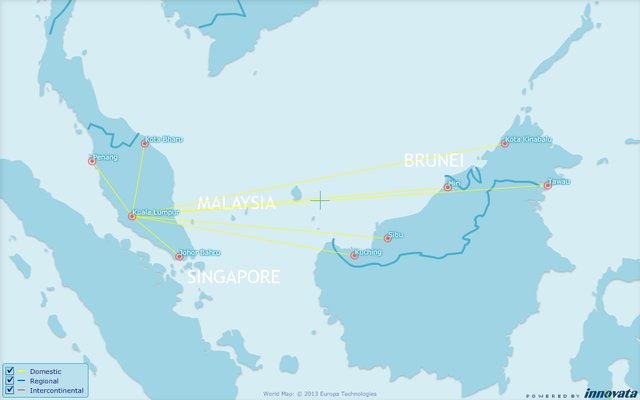Malindo Air chief executive Chandran Ramamuthy is a bold man. Just four months after starting operations, he has confidently declared that the carrier will turn an operating profit within its first year.
The Malaysia-based joint venture carrier has grown to a fleet of five aircraft, carried more than 200,000 passengers, and enjoyed consistent load factors between 70-80%, says Chandran. Moreover, all these have happened since the carrier's launch in March.
Chandran, formerly the right hand man of Lion Air president director Rusdi Kirana, made the comments in a recent interview with Flightglobal Pro in his office at the Kuala Lumpur International Airport. Lion holds 49% of Malindo, while Malaysia's National Aerospace and Defence Industries holds 51%.
"Right now, we're targeting to be profitable within one year of operations, which we believe we definitely can do because we have a good product," he adds.
Malindo calls itself a hybrid carrier, with its Boeing 737-900ER aircraft fitted with 12 business and 168 economy seats - much lower than the maximum capacity of 220 seats. This allows for a 32in (81.3cm) seat pitch in economy class, more generous than what AirAsia offers on its 180-seat Airbus A320s.
Its aircraft are also equipped with Panasonic eX2 in-flight entertainment systems, and passengers get a free snack and baggage allowance.
Even before it was launched, Lion's Kirana promised that Malindo will offer fares lower or at least on par with that of AirAsia's to compete as a newcomer.
A random check on airline websites shows that Malindo has kept to its word. A flight from Kuala Lumpur to Kota Kinabalu would cost M$248 ($76) all-in on Malindo and M$268 on AirAsia, without baggage allowance. Meanwhile, a flight from Subang to Johor Bahru would come to M$118 on Malindo and M$130 on Malaysia Airlines' turboprop arm Firefly.
Malindo route network in July 2013

FlightMaps Analytics
Malindo's strategy, however, has left many sceptical that the carrier will be able to soldier on without massive losses.
Even before the airline launched, CIMB analyst Raymond Yap said Malindo's entry will cause a price war between carriers operating in Malaysia. He adds that AirAsia's core net profit will decline from 2014 as a result, but he expects Lion to eventually call off the Malindo venture "in view of what we expect to be relatively large losses".
"Malindo has deep pockets and hence is resorting to price cuts to attract passengers. The offerings for now seem too good to be true and in my view are unsustainable," says Ravi Madavaram, aerospace consultant at Frost & Sullivan.
Chandran contends that apart from fuel costs, which it cannot control, it has been able to keep aircraft and maintenance costs low because of the economies of scale it enjoys as part of the Lion Group.
He points out that buying aircraft in bulk reduces the per unit cost.
"Lion group has more than 700 aircraft on order. When you buy spares, you also don't just buy one, you buy on a group level, so we can leverage on that cost benefit from there," says Chandran. "If you start as a Malindo on your own, if we don't have the Lion group behind us, we may not be able to make it."
Madavaram argues that Malindo would only be able to save on maintenance, if the operating costs between Malindo and an average airline were being compared. Its airport and handling and dispatch fees together with passenger service costs would also be higher since it does not charge for services, and operates out of the main terminal instead of the low-cost one.
"And knowing that it is a new airline offering huge promotions on its ticket sales, the load factor can be higher but with significantly lower revenues," Madavaram adds. "And maintenance only contributes about 11-15% of an airline's costs. Hence it is my view that Malindo will not be profitable in its first year."
Analysts add that it will also be tough for Malindo to compete with AirAsia, especially on routes where the latter already has a strong hold. Even if it can succeed in poaching passengers with low prices, Malindo will have a tough time handling costs as effectively as the low-cost carrier.
Flightmaps Analytics show that Malindo provided 9.3% and 7.4% of the total capacity on the Kuala Lumpur-Kuching and Kuala Lumpur-Kota Kinabalu routes respectively, in July. AirAsia, meanwhile, accounted for over 55% of capacity, while MAS' share hovered at the 35% mark.
When told about Chandran's confidence in Malindo turning an operating profit within its first year, a top executive at AirAsia said: "I do not think it's possible for them to have that low fare for a long time and be profitable."
"They can say what they want because they're a private company. We have to be transparent," the executive adds.
Source: Air Transport Intelligence news























